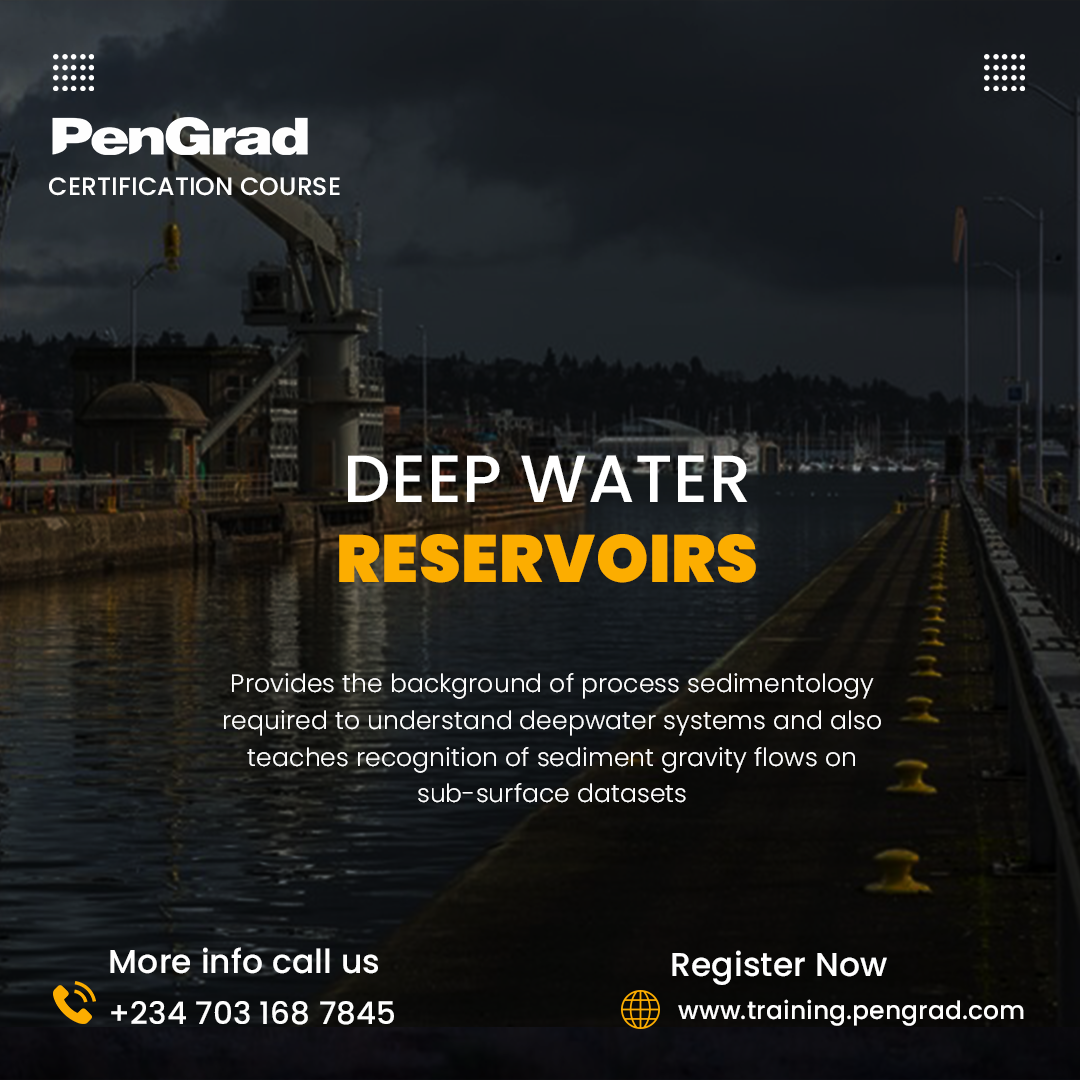Deep Water Reservoirs

About the Course
The Pengrad Petroleum course offers a comprehensive exploration, not only delving into the foundational understanding of process sedimentology necessary for grasping deepwater systems but also imparting knowledge on identifying sediment gravity flows within sub-surface datasets. The instructor will facilitate the learning experience by providing a teaching collection comprising seismic lines, well-logs, borehole images, and core images. Participants will have hands-on opportunities to engage with these materials during practical exercises.
Course Objectives
Upon completing this course, participants will be equipped to:
- Analyze seismic data to distinguish between Mass Transport Complexes, Sediment Gravity Flows, and Contourites, and accurately predict Net: Gross values for each category.
- Interpret well-logs to differentiate between channels, lobes, mass transport complexes, and contourite deposits.
- Examine core samples to recognize the processes accountable for sedimentary structures, bedforms, and lithology. Utilize this information to ascertain deposition environments and the lateral continuity of reservoirs.
Course Content
– Introduction to Basin classification based on substrate
– Understanding the concept of confinement
– Overview of Sequence Stratigraphy
– Introduction to deepwater oil and gas exploration
– Global distribution of prospective deepwater areas
– Study of shelf morphology and mobile substrate basins
– Comprehension of the concept of confinement
– Sequence stratigraphy of deepwater petroleum systems
– Effects of relative sea-level fall on sediment gravity flows
– Exploration of canyon incision and longshore drift capture
– Identification and discussion of key surfaces like the Maximum Flooding Surface and Sequence Boundary in seismic, well-log, and core data
– Differentiation between autocyclic vs. allocyclic changes and their impact on reservoir distribution and architecture
– Study and application of predictive stratigraphic models such as Mike Gardner’s Build-Cut-Fill and Spill and Adjustment-Initiation-Growth-Retreat.
Deepwater Processes
- o Sediment Gravity Flows
- o Fluid Gravity Flows
- o Exercise on identification of common deepwater facies in borehole image logs and core
Process sedimentology of deepwater systems: fluid gravity vs sediment gravity flows, hypopycnites, hyperpycnites, debrites, contourites (bottom-current deposits), turbidites, hybrid beds, linked debrites, slurry flows, traction vs suspension bedforms, liquefaction and fluidization, mass transport complexes, slides vs slumps and the effects of processes on reservoir quality. During this session you will learn how to identify deepwater processes by looking at core data and how to use the Kneller-Branney matrix to predict the occurrence of reservoir quality sands in your basin.
Channels
- o Deepwater channel hierarchy
- o Channel evolution
- o Levees
Deepwater Channel storeys, elements, complexes and complex sets (hierarchy), fill, architecture, evolution, channel-axis vs channe l-margin facies, recognition in outcrop, core, well-logs and seismic, assigning risk to drilling deepwater channels, confined vs poorly confined and organized vs disorganized channel belts and the preservation of reservoir quality sands, processes of flow-stripping, elutriation and flow-filtering, differentiating external vs internal levees in deepwater channel levee systems.
Lobes
- o Lobe hierarchy
- o Facies belts
- o Correlation methods for deepwater sands
Deepwater lobe beds, lobe elements, lobes, lobe complexes and fans (hierarchy), axis vs fringe facies, architecture, evolution, recognition in outcrop, core, well-logs and seismic. Mud-rich, Sand-rich and Mixed-systems and their characteristics, flow efficiency and its relationship to basin morphology, compensation stacking, changes in reservoir thickness and quality because of lateral and down-dip facies change.
Exploration and Development
- o Seismic Sequence and Facies Analysis
- o Selection of suitable analogs
- o Geomodelling How to approach deepwater reservoirs from exploration to development, systematic approach in seismic interpretation of deepwater sedimentary successions, sequence analysis, seismic facies analysis, classification of your deepwater system, selecting modern and ancient analogs, seeking expertise, steps in creating geomodels: creation of facies logs, deriving geometric data such as channel thickness and width, sinuosity, and choosing the best algorithm for modeling deepwater architectural elements.

